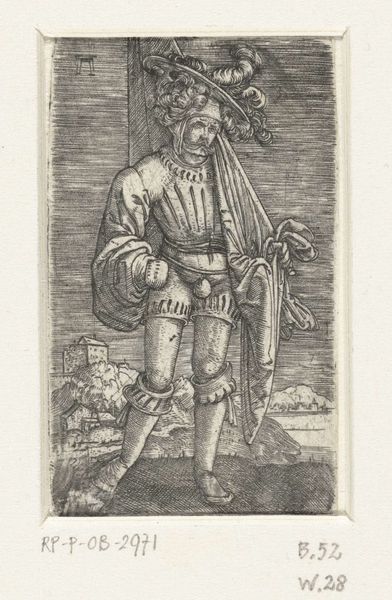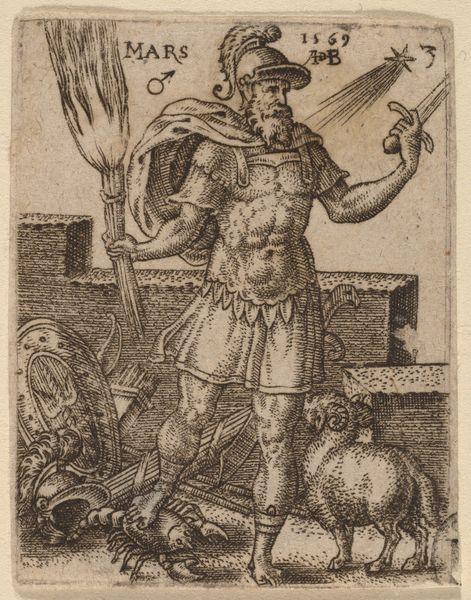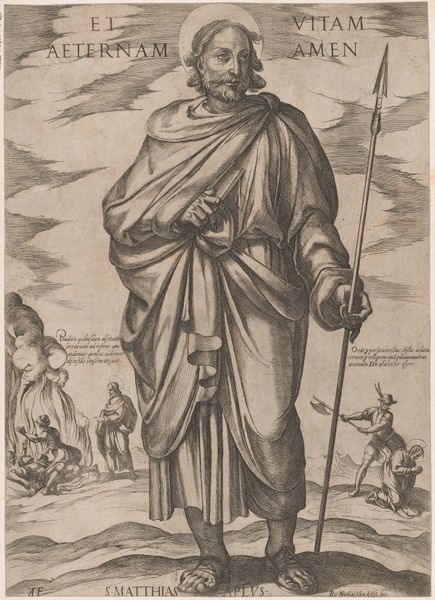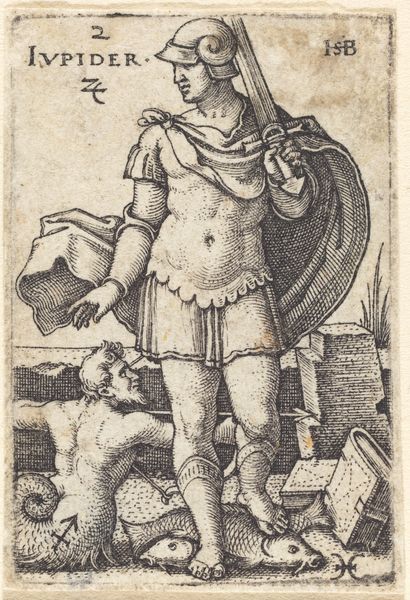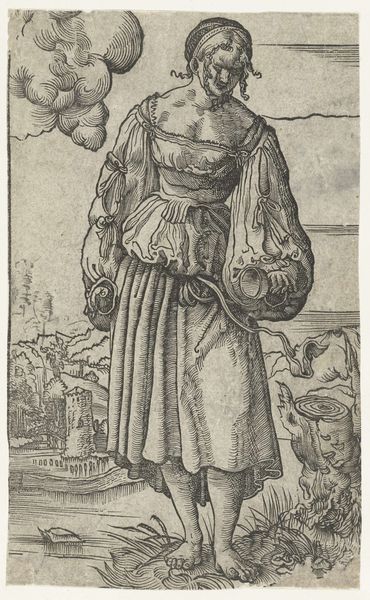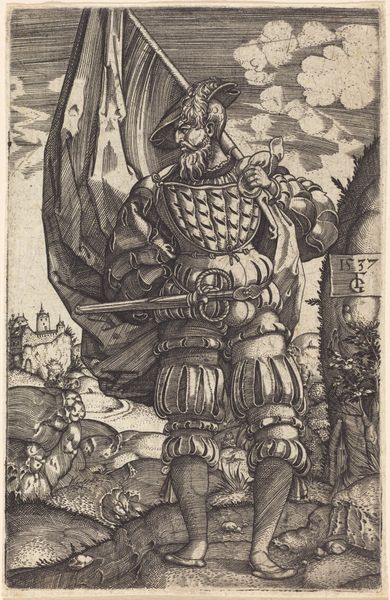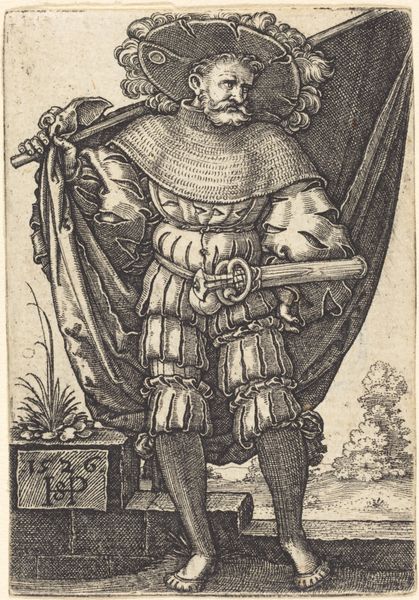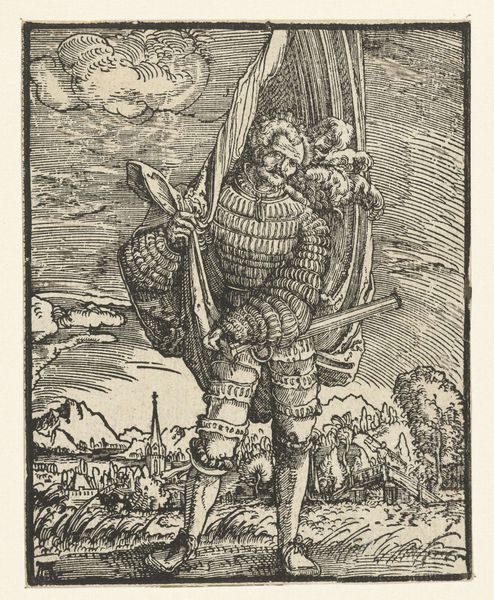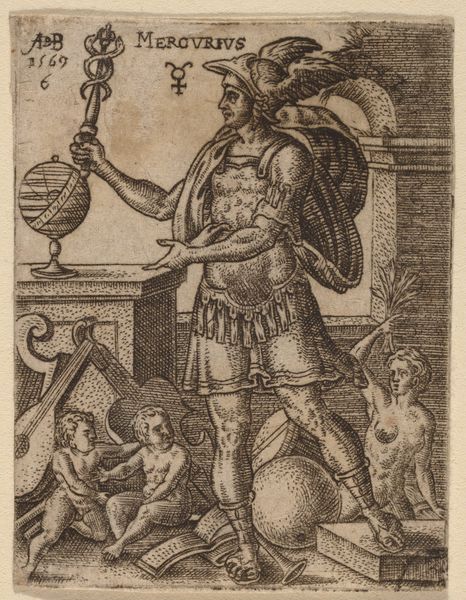
drawing, print, engraving
#
portrait
#
drawing
#
pen drawing
# print
#
soldier
#
men
#
northern-renaissance
#
engraving
Dimensions: Sheet: 2 3/8 × 1 7/16 in. (6.1 × 3.7 cm)
Copyright: Public Domain
Curator: This engraving, dating roughly from 1500 to 1538, is titled "The Little Standard-Bearer" and attributed to Albrecht Altdorfer. It resides here at The Metropolitan Museum of Art. Quite small, isn't it? Editor: Tiny but potent! He looks a bit melancholic, almost comically so, like a teenager forced to play dress-up. The rendering is incredible; you can practically feel the weight of his attire despite the miniature scale. Curator: Indeed. Altdorfer was a master of detail. Consider the man's attire—the elaborate feathered hat, the meticulously rendered folds of the banner he carries, and even the decorative slashing in his sleeves and hose. It all speaks to the values placed on appearances during the Northern Renaissance, and yet… Editor: ...and yet, there's that lingering sadness. Maybe it's the set of his mouth, or those droopy eyes? Even the slightly disheveled feather hints that this might be all for show. I'm getting strong "trying too hard" vibes, you know? The fortress in the background seems so grand compared to him! Curator: A perceptive observation! His expression, contrasted with the grandeur of his position—implied through attire, and maybe that standard we can’t see, held in his gloved left hand—introduces a dichotomy that is truly thought-provoking. Think, too, about what it meant to carry a standard; in the context of 16th-century warfare, to be at the front was to accept both great honor and considerable risk. Editor: He has a solid sense of style for such a tough role. A perfect example of that early modern balance of bravado, elegance, and fragility, maybe? The tension adds so much depth, almost a playful undertone that lightens the image and reminds us that art can be an excellent form of psychological portraiture. I want to follow his adventures and find out why he's looking so morose. Curator: Altdorfer masterfully used pen and engraving to depict more than surface appearances; he offers us a window into potential narratives, inner conflicts made outwardly and durably visible across time and cultural shifts. Editor: Definitely makes you reconsider all those stern historical portraits, doesn't it? It almost feels wrong to analyze so clinically a sad dude, a standard-bearer on the precipice of who-knows-what. Curator: Absolutely. Hopefully, however, he becomes less a forgotten artwork from another era and more a poignant testament to universal feelings we still carry.
Comments
No comments
Be the first to comment and join the conversation on the ultimate creative platform.
